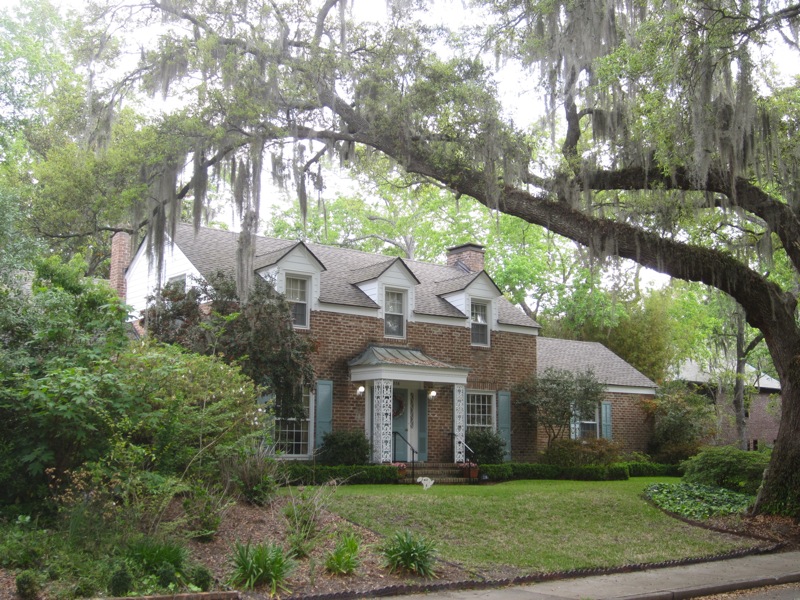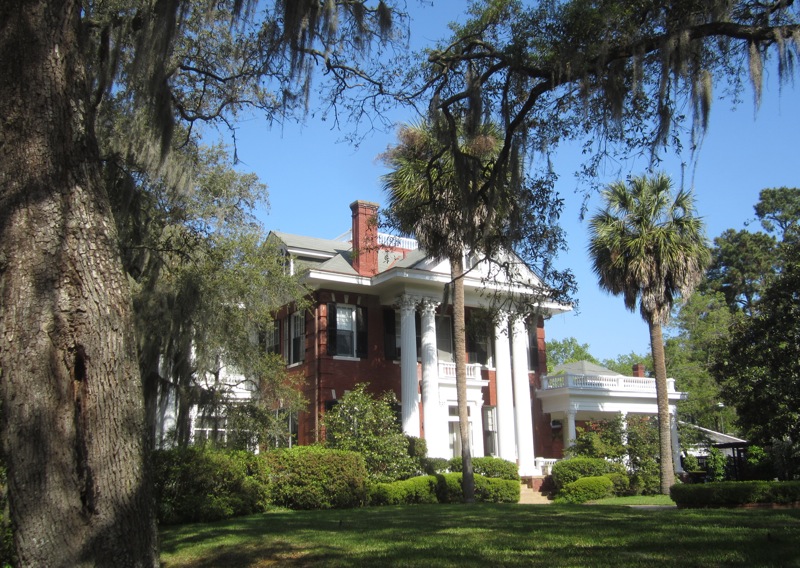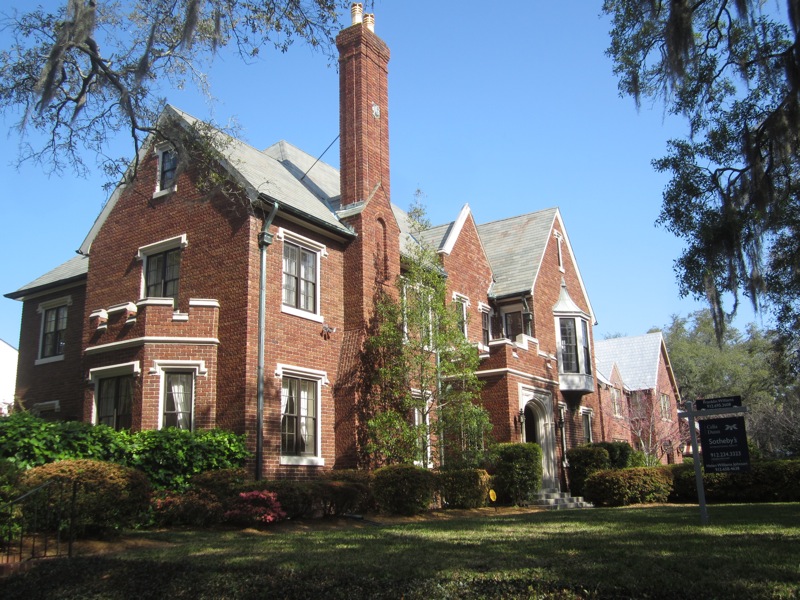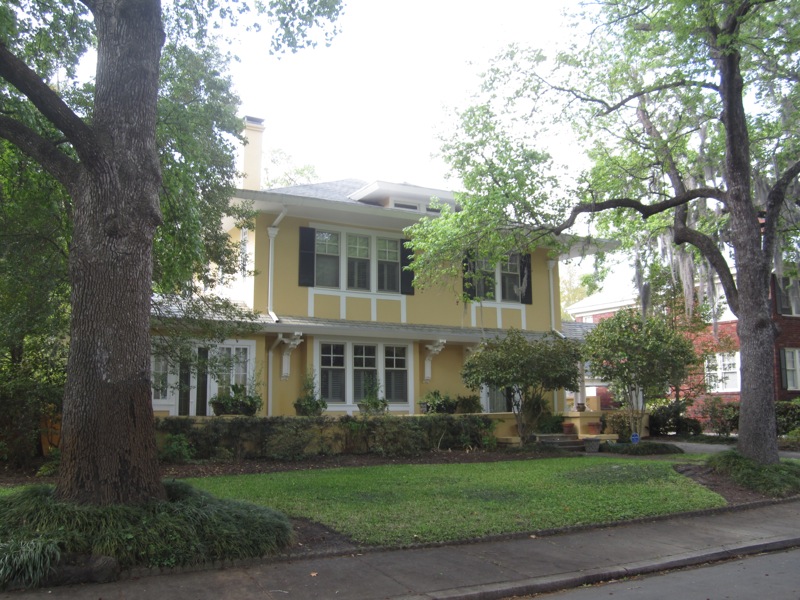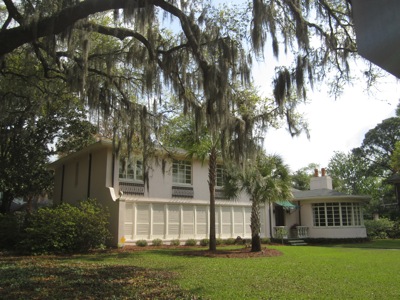I recently returned from a week in Georgia visiting my friend Richard. Fortunately for me, he lives in Savannah. Aside from its world-famous merits, the elegant squares, beautiful architecture, southern hospitality, Paula Dean, and Gardens of Good and Evil Midnights, it has the added advantage of being compact. Cursed with ADD and an acute interest in anything within my peripheral vision, exploring a city by car can be hazardous to pedestrians, crossing guards, dog walkers, and anyone whose warning screams can’t be heard over the retro 80’s fm station blaring on my rental car’s radio. By exploring a city by foot or bike, I am doing my bit to prevent a sudden spike in the metro region’s mortality rate.
One of my favorite morning activities there is to grab one of Richard’s bikes, get a coffee at a local bakery, and go explore the town’s architecture. Another blessing to Savannah is, aside from the main thoroughfares, traffic is relatively light and the squares tend to slow down vehicular speed in general, allowing cars to easily avoid my spirographic biking pattern. I have noted the drivers also honk less than New Yorkers, although their annoyed facial expressions and liberal use of middle fingers assure me that my lack of awareness is just annoying down there as back home.
Many tourists and visitors to the city are familiar with the buildings, parks, and landmarks Savannah, found around its 24 squares, or lining Forsyth Park. I still go to that part of the city every visit and am still charmed, but now that I have been to the city several times, I have been able to get a good look at some of the “newer” (meaning late nineteenth and earlier twentieth century) neighborhoods that lie to the south of the original antebellum city proper. On my last trip I focused on a couple of those Savannah neighborhoods that are often overlooked by visitors, Ardsley Park and Chatham Square.
Ardsley Park was developed as a planned community on the outskirts of Savannah in 1910. Described as an early “automobile suburb”, I was prepared for a bit of a haul to get there by bike from Richard’s house in the Victorian District. Amazingly, it only took 5 minutes, including two unplanned stops to apologetically mouth
“I’m sorry, I am a tourist and don’t know your town” to the two irate motorists I accidentally cut off. It seemed lame to bill it as a place you would need an automobile to get to, until I remembered the average city speed limit in 1910 was 8-10 miles per hour. Ardsley Park is laid out in a narrow 2-3 block wide strip running north south for about a dozen blocks. Abercorn Street serves as the main artery, and 4 or 5 small park-like squares punctuating its typical city grid pattern (this is Savannah, after all). The neighborhood immediately east, Chatham Crescent, was begun at a slightly later date than Ardsley Park. It is touted as a rare example in Georgia of a Beaux Arts “City Beautiful” plan. What that means here is the standard grid was not eliminated, but overlaid with crescent shaped streets terminating in small circular parks, and a grand avenue in the middle, resulting in a somewhat quirky layout. Interesting, but a little confusing. The Grand Avenue, is indeed grand, but short, and terminates abruptly at the border of an older neighborhood to the north. There is something so delightfully beautiful and nihilistic about this “Boulevard to Nowhere”, I almost wish Sarah Palin hadn’t said “thanks, but no thanks” to the Bridge. It might have prompted me to visit Alaska by now.
Interesting urban street patterns aside, the big draw to these neighborhoods is the remarkably intact housing stock from the first half of the 20th century. It represents every imaginable revival and eclectic style one could imagine, from idealized Cape Cod cottages to grand Georgian mansions. No two are alike, most appear to have been well cared for, and few have been mucked up with modernizations. Although by and large inspired by historical precedents, they were modern for their time, and are freewheeling adaptations of older styles, joyously unencumbered by the chains of precise historical accuracy. Federal Center Halls, Greek Revival Plantations, and Palladian villas sit cheek and jowl with Spanish Haciendas, California-style bungalows, and Tudor Manors. Houses whose front doors could open any moment to have Donna Reed or June Cleaver emerge from within to pick up the paper occupy the same blocks as some on whose verandas you could picture Scarlett O’Hara and Ashley Wilkes lounging (before the War, of course).
Shaded by mature trees, and enhanced by the numerous small parks, the neighborhood is a real ‘must see’ for anyone interested in urban planning and development, late nineteenth and early twentieth century residential architecture, or particularly those of us who like to look at houses from the outside and imagine what it would be like to live in them.
To follow are some of my favorites (for a more comprehensive catalog of the neighborhood’s homes, check out the Favorite Buildoings link on the right hand side of this page).


